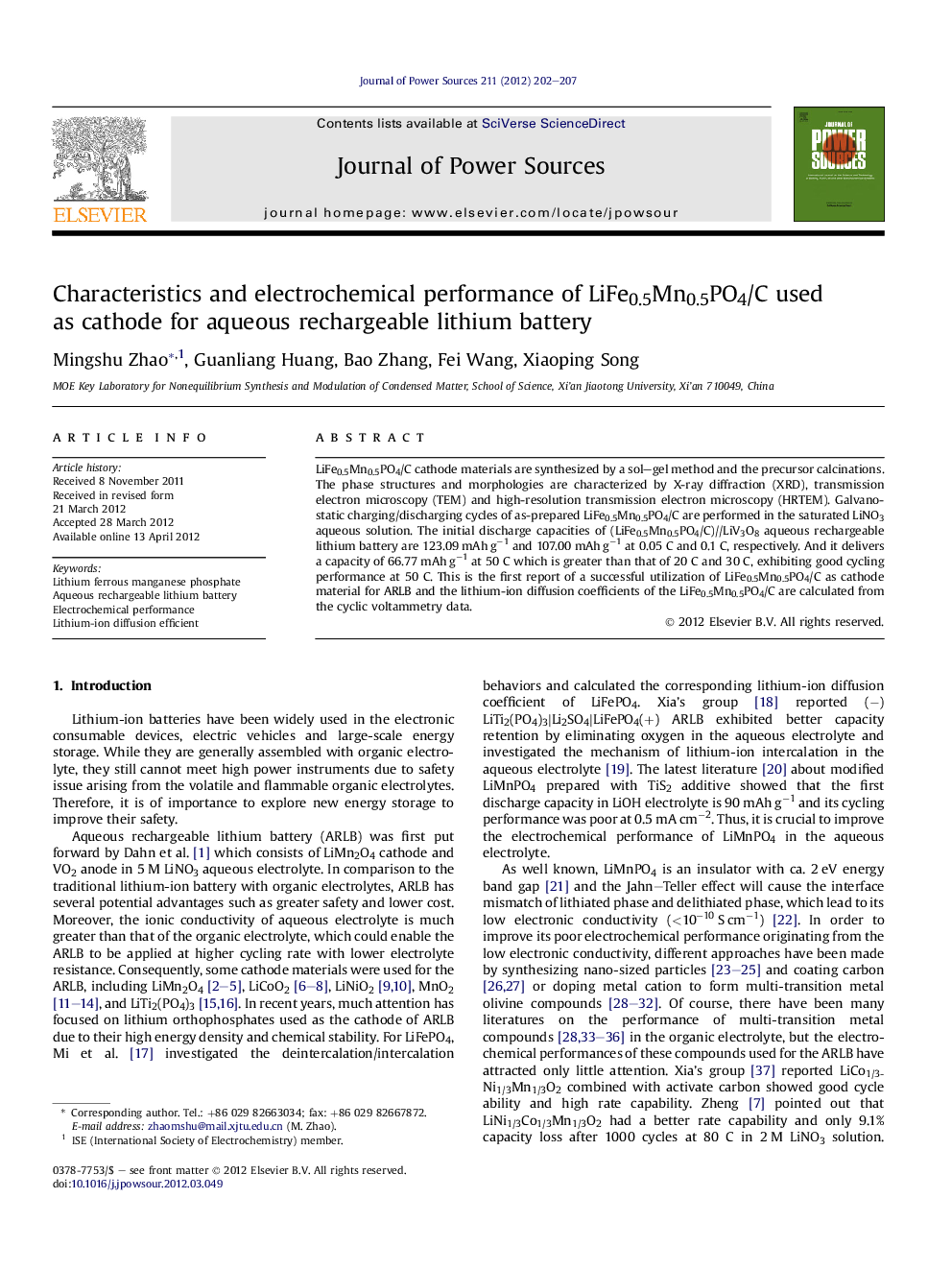| Article ID | Journal | Published Year | Pages | File Type |
|---|---|---|---|---|
| 1284523 | Journal of Power Sources | 2012 | 6 Pages |
LiFe0.5Mn0.5PO4/C cathode materials are synthesized by a sol–gel method and the precursor calcinations. The phase structures and morphologies are characterized by X-ray diffraction (XRD), transmission electron microscopy (TEM) and high-resolution transmission electron microscopy (HRTEM). Galvanostatic charging/discharging cycles of as-prepared LiFe0.5Mn0.5PO4/C are performed in the saturated LiNO3 aqueous solution. The initial discharge capacities of (LiFe0.5Mn0.5PO4/C)//LiV3O8 aqueous rechargeable lithium battery are 123.09 mAh g−1 and 107.00 mAh g−1 at 0.05 C and 0.1 C, respectively. And it delivers a capacity of 66.77 mAh g−1 at 50 C which is greater than that of 20 C and 30 C, exhibiting good cycling performance at 50 C. This is the first report of a successful utilization of LiFe0.5Mn0.5PO4/C as cathode material for ARLB and the lithium-ion diffusion coefficients of the LiFe0.5Mn0.5PO4/C are calculated from the cyclic voltammetry data.
Graphical abstractFigure optionsDownload full-size imageDownload as PowerPoint slideHighlights► We firstly report LiFe0.5Mn0.5PO4/C used in an aqueous lithium-ion battery. ► This ARLB system shows an unusual C-rate performance. ► This ARLB system exhibits good cycling performance at 50 C-rate. ► The lithium ion diffusion coefficients of the LiFe0.5Mn0.5PO4/C are calculated.
